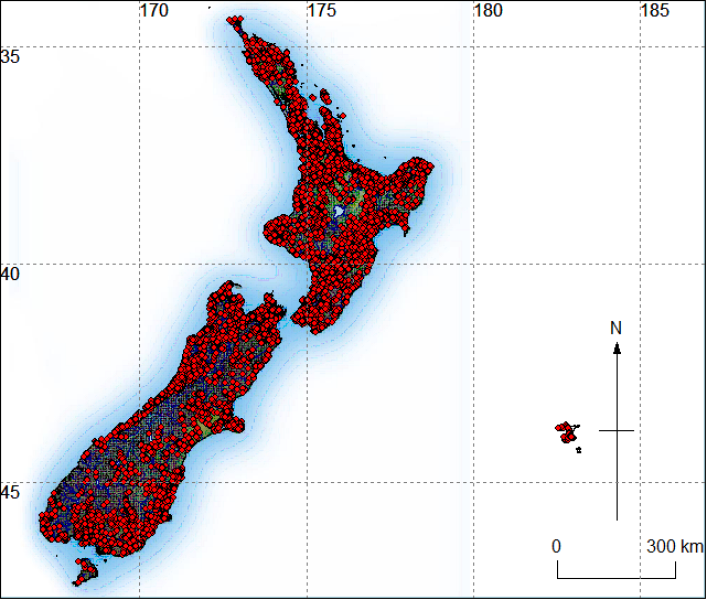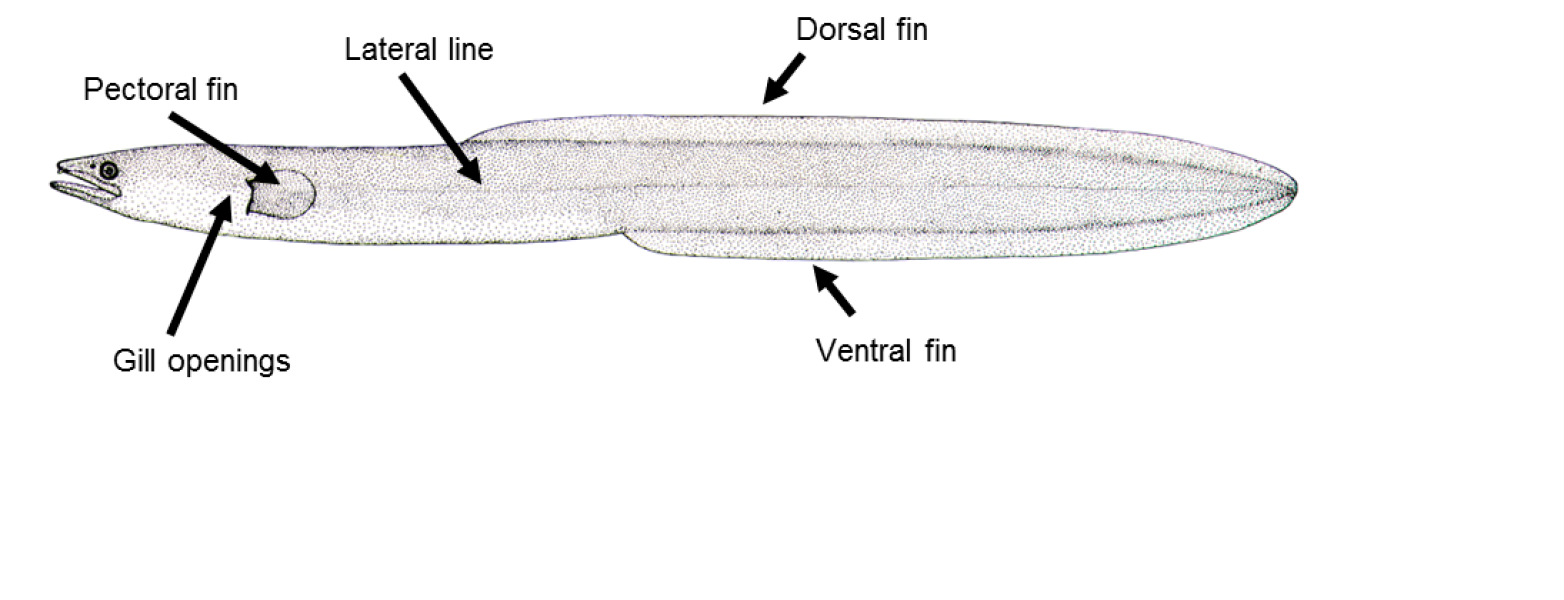Tuna is a generic Māori word for freshwater eels. The two words will be used interchangeably in this resource.
Māori have traditional systems of belief and an extensive knowledge of tuna. It is not the purpose or place of this resource to attempt to collate and publicise the extensive body of mātauranga Māori that is retained and has been actively practised over centuries by whānau, hapū and iwi. Rather, this resource has compiled and collated the biophysical scientific knowledge that has been published in the national and international literature – some of which is not easily accessible to the New Zealand public.
While New Zealand tuna species are often characterised in terms of biophysical science (family, genus, species etc), Māori also have an extensive range of names for tuna related, for example, to appearance, colouration, season of the year, size, behaviour, locality, and palatability.
Biophysical science currently recognises three eel species that occur in New Zealand – the endemic longfin (Anguilla dieffenbachii), the shortfin (Anguilla australis) and the Australian longfin (Anguilla reinhardtii). While we share our shortfin stocks with south east Australia and some Pacific Islands, longfins (A. dieffenbachii) only occur in Aotearoa.
Australian longfin in New Zealand
The occurrence of the Australian longfin (A. reinhardtii) in New Zealand was confirmed in 1997, from 19 eels caught in the Waikato River. How they got to New Zealand is unknown but may be due to changes in the oceanic currents which transport the passive larvae from the spawning grounds in the South Pacific. Although confirmation of this species in New Zealand is fairly recent, anecdotal evidence suggests that this species may have been in here for at least 25 years.
The Australian longfin eel has a similar life cycle and basic ecology to shortfins and the New Zealand longfin. A. reinhardtii is also long-lived and reaches a large size, similar to A. dieffenbachii. The Australian longfin eel also spends most of its life in freshwater and migrates to the sea to spawn, just like New Zealand eels. However, the glass eel stage of this species arrives in Australian freshwaters in large numbers during summer and autumn, as opposed to New Zealand species where large numbers are seen in spring and summer.
References and further reading
Best, E. (1929). Fishing Methods and devices of the Maori. Dominion Museum Bulletin No 12. 92 p.
Chisnall, B.L. (2000). The Australian longfinned eel, Anguilla reinhardtii, in New Zealand. Conservation Advisory Science Notes No. 302. Department of Conservation. 14 p. http://www.doc.govt.nz/upload/documents/science-and-technical/casn302.pdf
Jellyman, D.J., Chisnall, B.L., Dijkstra, L.H., Boubée, J.A.T. (1996). The first record of the Australian longfinned eel, Anguilla reinhardtii, in New Zealand. Australian Journal of Marine and Freshwater Research 47:1037-1040. http://www.publish.csiro.au/nid/126/paper/MF9961037.htm
McDowall, R.M. (2000). The Reed Field Guide to New Zealand Freshwater Fishes. Reed Publishing (NZ) Ltd, Auckland. 224 p.
McDowall, R.M. (2011). Ikawai: Freshwater fishes in Māori culture and economy. Christchurch, N.Z., Canterbury University Press. 872 p.
McDowall, R.M., Jellyman, D.J., Dijkstra, L.H. (1998). Arrival of an Australian anguillid eel in New Zealand: an example of transoceanic dispersal. Environmental Biology of Fishes 51(1): 1-6.
Potangaroa, J. (2010). Tuna kuwharuwharu, the longfin eel. An educational resource: facts, threats and how to help. 26 p.
Strickland, R.R. (1990). Nga tini a Tangaroa. A Maori-English, English-Maori dictionary of fish names. New Zealand Fisheries Occasional Publication No. 5. MAF Fisheries,Wellington.



